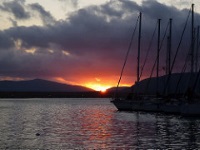
The flourishing fishing port of Alghero, situated on the northwest coast, is Sardinia's tourist centre and attracts thousands of holidaymakers each year. It consists of a picturesque and well-preserved old town enclosed in a stout girdle of walls. Outside, the new town sports a grid of parallel streets filled with hotels and restaurants. A favoured package tour destination, Alghero offers beautiful beaches and year-round holiday amenities together with numerous places of interest to visit. The town is very Spanish in flavour, having been invaded by Pedro IV of Aragon in 1354.The narrow cobbled streets of the old town are lined with flamboyant churches and wrought-iron balconies, boutiques and cafes, as well as the workshops of craftsmen working the famed coral of Alghero. The local cuisine hints of Spain too, and the town is renowned for its excellent seafood. Authentic Spanish paellas, lobster alla Catalana and tasty fish soups abound, with delicious sea urchins on sale from stallholders in the port. Around the town the coast offers many secluded bays, small inlets bordered by pine forests and high, jagged cliffs washed by the sea. Inland, luxuriant vineyards produce some of the most aromatic wines on the island. Nightlife is sedate, tending more toward sipping cocktails at a sidewalk café and watching the sunset from the seafront than frenetic nightclubbing.
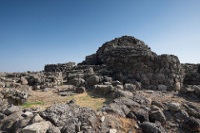
Cagliari is Sardinia's capital, a favourite with holidaymakers, and the biggest city in the region, with a busy industrial port. Despite its size the old centre is charmingly compact, contained within the city walls and Pisan fortifications. The main attractions are the National Archaeological Museum, which contains prehistoric tombs and other significant artefacts from the Punic and Roman periods, the impressive cathedral, and a smattering of Roman ruins. The suburb of Poetto has a four mile (6km) stretch of sandy beach with some small bars nearby. The famous nuraghe of Su Nuraxi near Barumini are within easy reach of the town.Sardinia's history and culture is conveniently packaged in the Citadel of Museums complex in the centre of Cagliari. Here the National Archaeological Museum, the National Picture Gallery, the Cardu Siamese Museum and a collection of anatomical waxes by Florentine sculptor Clemente Susini are situated, all administered by the University. The Archaeological Museum houses artefacts from all the ancient cultures of the island, including ceramics from Phoenician tombs, Punic jewellery and Nuragic bronzes. The Picture Gallery contains a collection of contemporary art and sculpture, while the Siamese museum exhibits fascinating items from the East. The unique Collection of Waxes consists of 23 models of parts of the human body, created by Clemente Susini from waxes, resin, tallow, pitch and balsam.
Address : Piazza Arsenale
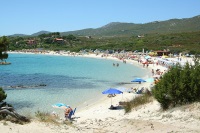
The jet-set strip of Sardinia, Costa Smeralda is a six-mile (10km) stretch of coastline between the gulfs of Cugnana and Arzachena on the island's northeast coast, which has become a developer's paradise and extremely popular with holidaymakers. Legend has it that a fabulously wealthy consortium of businessmen first exploited this beautiful wild coastal strip in the 1960s, backed by the Aga Khan. Today the local villages and towns around Costa Smeralda have become discreet upmarket resorts crammed with private villas, luxurious holiday villages, contrived Mediterranean-style shopping malls, low-rise high-priced hotels and huge yachting marinas packed with gleaming yachts.The main town of the area is Porto Cervo, a crime and litter-free playground of the rich with its ranks of pale pink and red villas climbing the hill from the busy marina. The other favourite retreat for celebrities is the town of Porto Rotondo, situated on a natural cove about 10 miles (16km) from Olbia, site of the international airport. The town offers a wealth of beaches, nightclubs, bars and restaurants, most clustered around its Piazza San Marco, and the marina. The main attractions of the Costa Smeralda are the numerous sequestered beaches, none signposted, which can be discovered simply by following a dirt track down towards the sea. Among the most scenic are Cappriccioli, Rena Bianca and Liscia Ruja, all south of Porto Cervo.
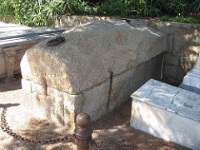
The famous Italian revolutionary, general and politician Giuseppe Garibaldi lived the last third of his life on the woody, undeveloped island of Caprera, a short ferry-ride from Palau on Sardinia. Garibaldi was a central figure in the Italian Revolution as he commanded and fought in many military campaigns that eventually led to the formation of a unified Italy. He famously led 1,000 Red Shirts on his campaign to conquer Sicily and Naples from Caprera in 1861. He is considered one of the 'father's of the fatherland' by Italians, and is also famous for his military campaigns in South America.The trip to view Garibaldi's house and museum is very popular in season, with visitors queuing to catch one of the regular ferries to Caprera. Garibaldi came to live in Caprera in 1855 after a 20-year exile from Italy. The elegant homestead has been preserved as he left it and visitors can learn a lot about his lifestyle from exploring the farm; on Caprera he lived a simple, peaceful life tending his gardens and orchards. Tours of the property end with his tomb in the garden. There is a relic room filled with some of his personal belongings and historical artefacts. For many Italians and foreign visitors Garibaldi's house and grave are a sort of pilgrimage site, a place to pay homage to a national hero.
Address : Caprera Island
Website : www.compendiogaribaldino.it
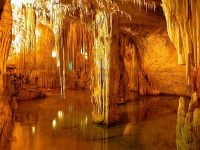
A popular sightseeing expedition from Alghero is a boat ride to Neptune's Grotto, an impressive deep marine cave at the bottom of the sheer cliffs of Capo Caccia. The boat ride takes about 45 minutes, and goes past the pretty Bay of Porto Conte. At the cave visitors can take a 45-minute tour entering through the long snaking passage that delves into the rock, to view dramatically-lit stalagmites and stalactites. The contrast of the sun sparkling bright on the sea and the orange cliffs with the mysterious dark depths of the cave is magical and sailing in through the gap in the cliffs is the best way to explore it; however, the grotto can also be reached by bus from the main terminal in Alghero, or by car, which on arrival necessitates climbing down 650 steps to the cave entrance. The cave entrance, from the sea, is only about a metre above the water level, so it can only be accessed when the sea is calm. Boat trips into the cave run regularly in summer and are very popular, but they are less frequent during the rest of the year. The cave takes its name from the Roman god of the sea, Neptune, and was discovered by local fishermen in the 18th-century. There are many underwater caves in the area, which makes it popular with scuba divers.
Address : Alghero
Transport : Boats depart regularly (especially in Summer) from the port in Alghero to Neptunes Grotto. It is also possible to reach the Grotto by road from Alghero to Capo Caccia.
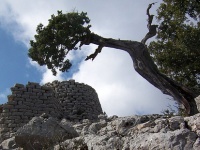
The mysterious Nuragic people, who arrived in Sardinia around 1500 BC, festooned the island with about 30,000 circular fortified structures. Today about 7,000 of these remain standing to be marvelled at by tourists. The complex of Nuraghe in Barumini has been added to UNESCO's World Heritage List and is the finest and most complete example of this prehistoric architecture. The Barumini site can be reached from Oristano or Cagliari on route 131, turning off onto route 197. Other well-preserved Nuraghe can be seen at Sant Antine. At Nora, on the very southern tip of the island, are the remains of an extensive Nuragic village including an amphitheatre, forum, baths, temple and Kasbah. Other good Nuragic sites are near Villanovaforru, Alghero and Abbasanta. The purpose of the beehive-like buildings remains unknown but archaeologists assume they were used as religious temples and meeting halls as well as military strongholds. Exploring the ancient sites indulges ones inner Indiana Jones and feels like a great adventure. For anybody interested in archaeology, or the ancient history of the region, visiting Nuraghe is a must. You can only explore Nuraghe on an official tour, but these usually depart every 30 minutes; bigger groups are advised to pre-book.
Website : www.nuraghi.org
Opening times : Most Nuraghe are closed in the afternoon and on Sundays
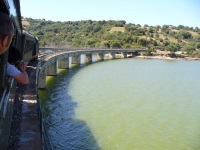
Sardinia has an unforgettable coastline, but the interior of the island is equally as beautiful. A fun way to explore it is aboard the Trenino Verde (Little Green Train), a vintage steam locomotive that puffs its way through forests, over bridges and through tunnels into some of the island's most scenic mountain areas. The narrow-gauge train tracks were laid in 1888 to serve the more isolated areas of Sardinia, and the picturesque restored train and locomotive is just as old. The train runs on scheduled routes, connecting Nuoro and Bosa, Sassari and Alghero, Sassari and Palau, and Cagliari and Arbatax. Most popular is the Cagliari to Arbatax route, which departs each morning in summer at about 6:45am. The train is small and tickets are limited so it is best to book in advance. The train sometimes stops at scenic spots so that passengers can stretch their legs and take photographs. It is best to face forwards - the direction that the train is moving in - to catch the best views. Food is not served on the train but it is possible to buy snacks and refreshments during stops, especially on the longer routes. If you are travelling in Sardinia with kids this is a fantastic activity for the whole family.

Travel Guide powered by Word Travels, copyright © 2023 Globe Media Ltd. By its very nature information in this travel guide is subject to change at short notice and travellers are urged to verify information on which they're relying with the relevant authorities. Neither Globe Media Ltd nor Travel Vogue can accept any responsibility for any loss or inconvenience to any person as a result of information contained above.